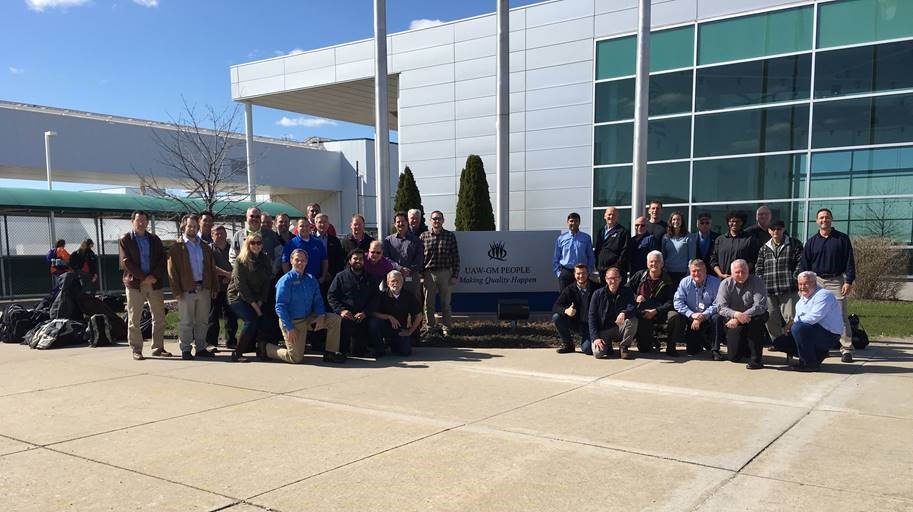Municipal wastewater treatment plants (WWTPs) primarily are biological processes that remove pollutants from wastewater to protect water quality in receiving streams. Most municipal WWTPs are primarily designed to remove organic matter and suspended solids from the waste stream. Biodegradable organic matter in wastewater typically is measured in terms of Carbonaceous Biochemical Oxygen Demand (CBOD). CBOD is the amount of oxygen required by microorganisms in the biodegradation of organic matter under aerobic conditions. Total Suspended Solids (TSS) are solids in suspension in wastewater that can be removed by laboratory filtration through a standard glass-fiber filter with an effective retention of 1.2 microns. In some cases, municipal WWTPs also are designed to remove ammonia-N, Total Nitrogen, and Total Phosphorus. Effluent requirements mainly depend on the characteristics of the receiving stream into which the municipal wastewater effluent is discharged.
The Better Plants program will deliver training on biological wastewater treatment systems (activated sludge) and the Bio-Tiger Model on September 9, September 16, and September 23, 2021. The training will be performed by Dr. Moore using online video communication technologies. The MEASUR Webinars comprise three (3) 2-hour online training sessions that will be delivered on every Thursday 10:00 AM – 12:00 PM ET for three (3) consecutive weeks. Participation in this training is free and open to all the Better Plants program partners.
These webinars provide classroom training sessions that train the attendees to understand the basics of biological wastewater treatment, become familiar with the activated sludge process, assess municipal wastewater treatment plant performance, identify energy conservation opportunities, quantify savings from those opportunities, and implement projects to realize energy and cost savings. These training workshops enhance the attendees’ understanding of biological treatment concepts, knowledge of different types of activated sludge plants, capability of analyzing activated sludge performance using the Bio-Tiger Model in MEASUR, and capability to recommend appropriate energy conservation measures.
The first training session will be an introduction to biological wastewater treatment. The topics to be covered include objectives of biological treatment, definitions of biological treatment processes and functions, the role of microorganisms, activated sludge processes, and a brief introduction to biological Nitrogen and Phosphorus removal.
The second training session will focus on optimizing performance of the activated sludge process, saving energy, and reducing nutrient discharge. The goals of process optimization are to achieve good sludge settleability and excellent effluent quality, manage the biomass inventory efficiently, channel influent CBOD loading into sludge production and energy reactions appropriately, and achieve biological nutrient removal efficiently. Saving energy usually focuses on the aeration system of the activated sludge process because aeration usually accounts for 50% to 60% of the total energy used by municipal WWTPs. Energy saving approaches in aeration include operation at the minimum acceptable dissolved oxygen (DO) concentration in reactors, using automatic DO control, using on-off aeration to facilitate denitrification, and operating blowers and surface aerators efficiently. Reducing nutrient discharge involves using anoxic and/or anaerobic metabolism (if feasible) to achieve denitrification and/or biological phosphorus removal.
The third training session will provide detailed guidance on use of the Bio-Tiger Model in MEASUR. The Bio-Tiger Model was developed by Dr. Moore and his graduate students to simulate activated sludge processes. Dr. Moore has used this model to analyze approximately 200 activated sludge processes throughout the U.S. In general, the model is very useful for making process decisions to optimize the activated sludge process, to achieve energy savings via better aeration system control, and to improve effluent quality. Dr. Moore will show how to input data in the model, how to execute the model, and how to interpret model results to make activated sludge process improvements and to achieve energy savings.

Dr. Larry W. Moore, Professor Emeritus of Environmental Engineering at the University of Memphis.
Dr. Moore received his B.S. in Civil Engineering from the University of South Alabama in 1973 and his M.S. and Ph.D. in Environmental Engineering from Mississippi State University in 1974 and 1983, respectively. From 1983 until 2018, Dr. Moore taught undergraduate and graduate environmental engineering courses and conducted applied research at the University of Memphis. He has 47 years of wastewater treatment plant design and troubleshooting experience. From 2010 through 2021, Dr. Moore helped conduct energy conservation projects for approximately 80 municipal wastewater treatment plants in Tennessee, Alabama, Kentucky, Georgia, North Carolina, and Mississippi. These projects were funded by the Tennessee Department of Environment and Conservation, the U.S. Department of Energy, and the USEPA.



